Wheel-on vs direct drive turbo trainers: which is best for you?
Turbo trainers for indoor cycling can either be wheel-on or direct drive in design, but how does this impact your workout? We explain what each has to offer
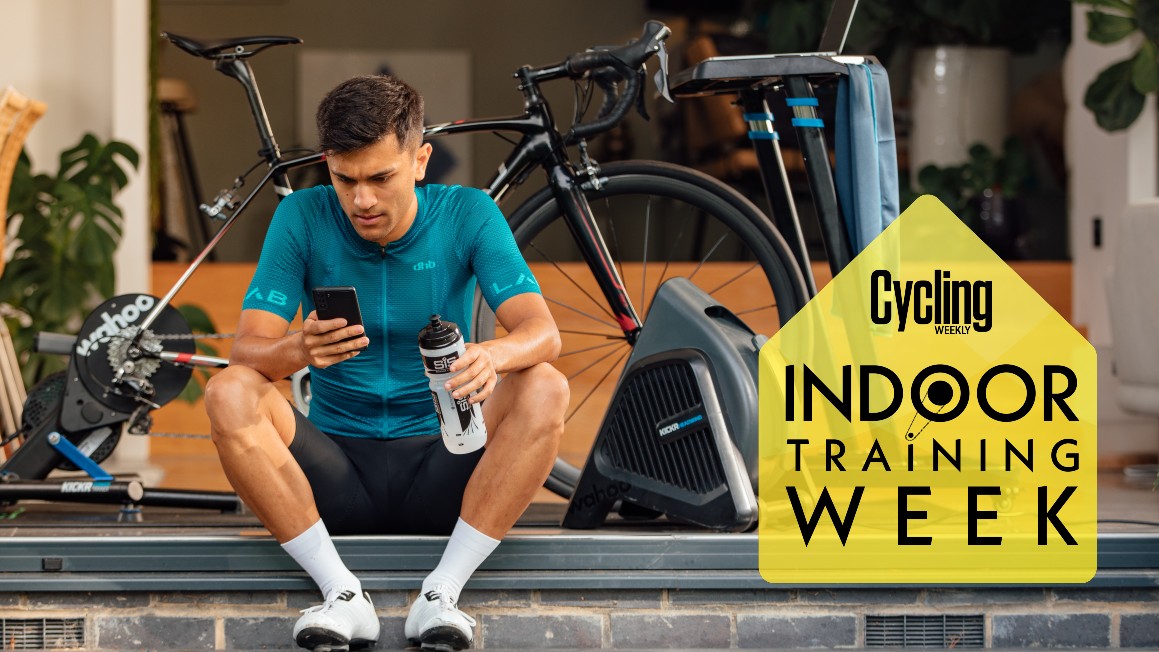

A decent turbo trainer—whether it's wheel-on or direct drive—can make indoor riding not something you just have to tolerate when you have limited time or the weather’s bad, but a worthwhile alternative form of training.
Indoor cycling can be useful for executing structured sessions with set intervals as there are no cars or junctions to get in your way.
But it is important to have a turbo trainer that you can rely on when giving it your all in an effort, and is fit for your needs as a rider and the space you live in.
Wheel on and direct drive turbo trainers are two different types available to you, and both come with smart options for variable resistance when riding in virtual platform like Zwift or Rouvy.
The visually obvious difference between the two is the way the bike is attached to the trainer. But with this, there are lots of pros and cons that will effect which one you will lean towards. We talk you through the features of both types and what they can come in handy for.
Wheel-on turbo trainers
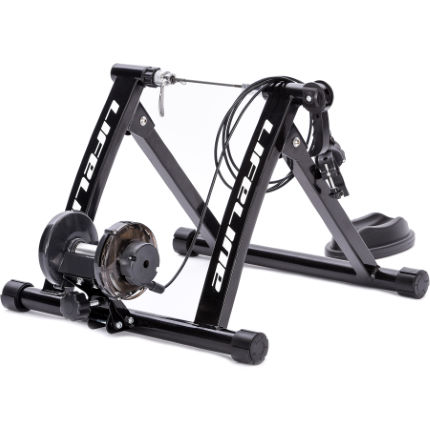
Wheel-on turbos are an affordable option for indoor training and although they are often seen as the budget choice there are reasons this style of turbo could suit you better. As the name suggests, with this trainer the rear wheel of your bike stays on and this is set up against a roller.
Turbo trainers have adjustable resistance to make it easier or harder to push round the pedals. With wheel-on turbos this is achieved through friction between the rear wheel and the roller. In most cases, magnetic resistance adjusts this and can be controlled with a handlebar mount on standard models.
But the amount of resistance that can be created is not as much as you will find on a more premium turbo trainer. With the maximum watts restricted to around 800 watts in some models, if you are a stronger and more powerful rider the limited resistance capability on wheel-on turbos could prove frustrating when sprinting. However for a lot of riders, for the majority of efforts you are likely to undertake, the upper limit will be sufficient and give you ample room for improvement.
Where wheel-on turbos excel is a practical choice as non-smart models don't need to be plugged in and they tend to have an A-style frame which can be easily folded away. This is useful if you don’t have a dedicated turbo space and need to set up/pack up whenever it is time to suffer indoors. Also they can be easily carried and transported in a car to an event you are participating in, meaning you have something for a focused warm up on, instead of relying on local roads. However, it could be argued that a set of rollers are better for getting going on race day. Rollers are even lighter to transport, quicker to mount and dismount from, and activate your core muscles as you need to balance to stay upright. With a wheel-on turbo you aren’t getting the best equipment specifically for indoor training sessions or taking to races, but you are getting something that can do both sufficiently well which makes it a good value option.
Do bear in mind that although you will have saved some money with the initial cost of a wheel-on turbo, it is also advisable to invest in an indoor trainer tyre or a wheel that stays wrapped in an indoor tyre. The friction between the back tyre and the roller that creates the resistance will cause your tyre to wear. Specific indoor trainer tyres are made of a rubber compound that minimises overheating, slippage and wear. This better grip is only any good for the trainer’s roller and are very dangerous to ride with outside so must not be used on the road under any circumstances. Changing the tyre each time you want to ride indoors would take time so it’s recommendable to have a specific turbo training wheel.
Smart wheel-on turbo trainers
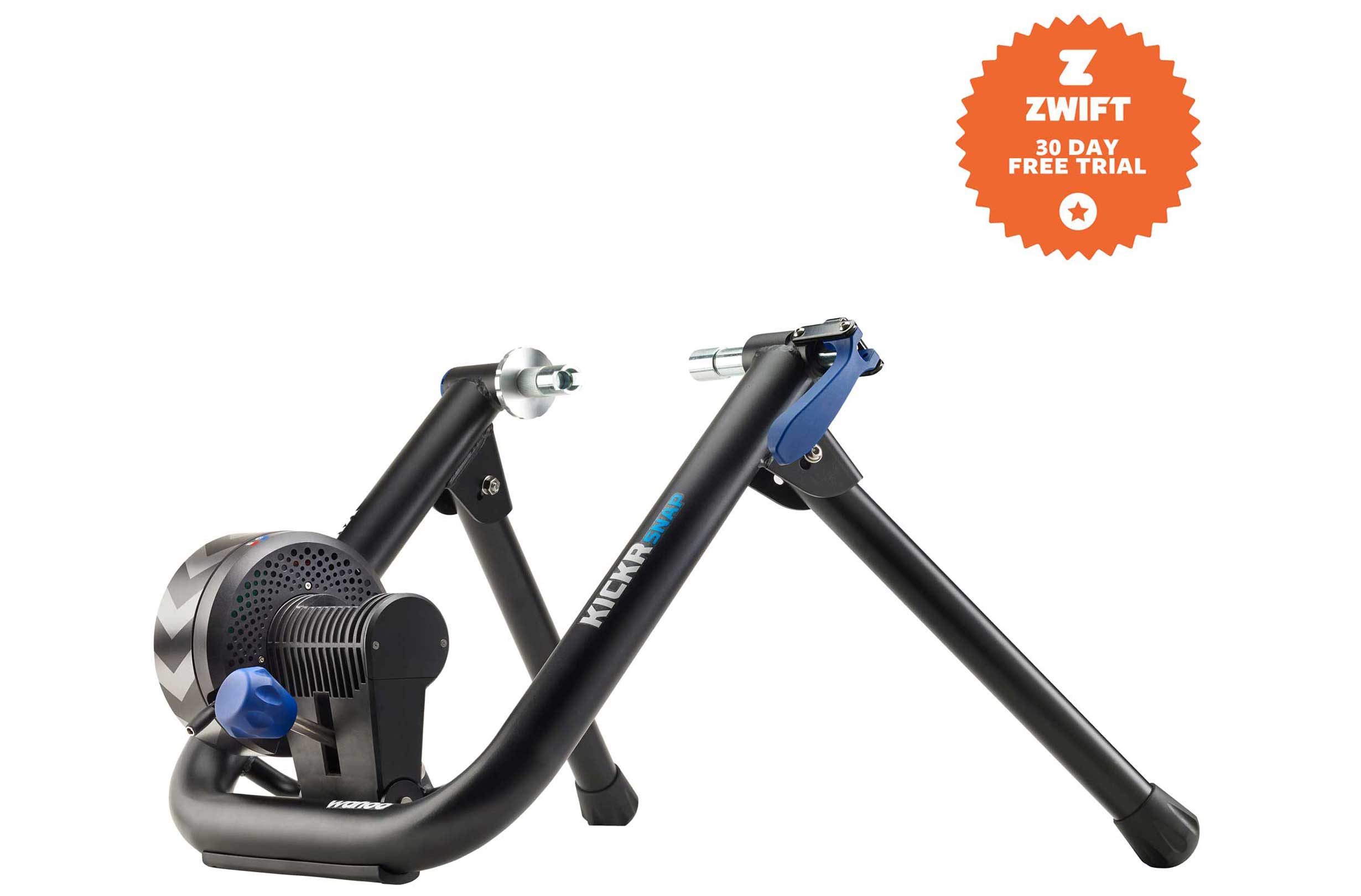
Smart versions of wheel-on turbos such as Wahoo’s Kickr Snap are now available for under £500. These allow you to link up to platforms like Zwift and enjoy the changing resistance levels as the terrain or efforts adjust—at an affordable price point. For riders with a tighter budget, it is also possible to ride on the virtual roads of Zwift by pairing a standard (non-smart) wheel-on turbo with a speed/cadence sensor or a hub/crank based power meter but this won't give you variable resistance. The speed/cadence sensor option will also not provide very accurate power readings as it is calculated by an algorithm, rather than a power meter itself.
Direct drive turbo trainers
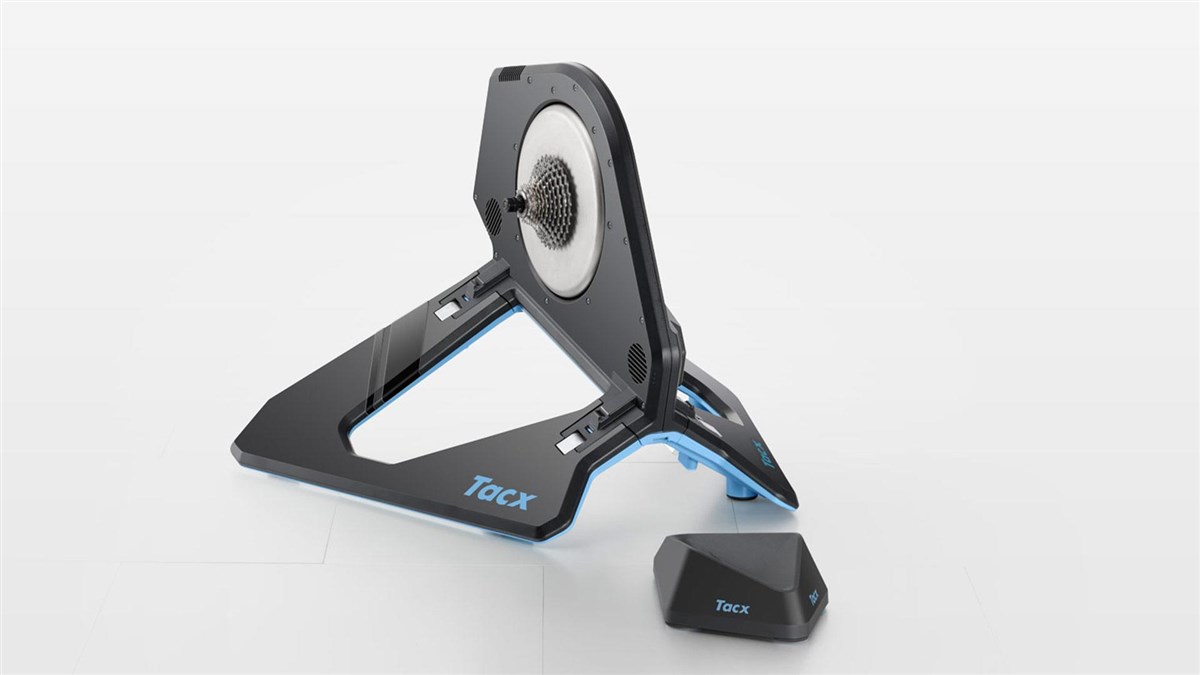
Wheel-off turbo trainers are known as direct drive trainers, and they offer a more realistic riding experience compared to wheel-on trainers - they are ultimately the best turbo trainers for performance. The majority of these turbos are smart and have an in-built power meter. Wahoo's top of the range smart direct drive model is the Kickr smart which sells for £999, while Tacx's premium offering is the Neo 2T smart for £1199.
With a direct drive trainer the rear wheel is removed and the trainer takes its place. The bike attaches directly to the trainer at the rear dropouts and the bike’s chain drives a cassette that is connected to the trainer.
With this design style, direct drive turbos are often bigger units and heavy. This is great when you put in a full-pelt sprint as you know the bike is going to stay put and provide the necessary stability. But it is also inconvenient for putting it away if your space at home is limited. Therefore direct drive turbos are better for riders who have a permanent space for training and train frequently.
If you have the space and a bigger budget, direct drive turbos are preferable as they offer a smoother ride and perform more efficiently than the wheel-on alternatives. Direct drive turbos eliminate inaccuracies created through wheel slippage and roller tension inconsistencies. A more accurate power reading is also given, as the reading comes from the rear axle. Whereas a wheel-on turbo will often read a little lower because of power lost through the friction of the rear wheel.
Direct drive trainers utilise a heavy flywheel to generate momentum and this creates a more realistic simulation of riding on the road. The lack of a rear wheel with this set up also means you are saving your outdoor specific tyres from wear and it is a much quieter ride. Although the latter may seem insignificant, the limited noise could open up your training schedule as, for example, you can train at times you’d usually wake up others in your house.
Without the additional cost of a new turbo tyre and rear wheel, which is advisable for wheel-on turbos, some direct drive turbo trainers aren’t even significantly more expensive. At the lower end Elite’s Zumo smart direct drive turbo is just £479 and can measure power to an accuracy within +/- 3% and can simulate slopes up to 12% on the virtual platforms.
Also direct drive turbos can be less faff compared to using a specific indoor tyre/wheel for a wheel-on turbo—there’s one fewer step as you don’t need to put in a different rear wheel before attaching it to the turbo.

Thank you for reading 20 articles this month* Join now for unlimited access
Enjoy your first month for just £1 / $1 / €1
*Read 5 free articles per month without a subscription

Join now for unlimited access
Try first month for just £1 / $1 / €1
Get The Leadout Newsletter
The latest race content, interviews, features, reviews and expert buying guides, direct to your inbox!

I’ve been hooked on bikes ever since the age of 12 and my first lap of the Hillingdon Cycle Circuit in the bright yellow kit of the Hillingdon Slipstreamers. For a time, my cycling life centred around racing road and track.
But that’s since broadened to include multiday two-wheeled, one-sleeping-bag adventures over whatever terrain I happen to meet - with a two-week bikepacking trip from Budapest into the mountains of Slovakia being just the latest.
I still enjoy lining up on a start line, though, racing the British Gravel Championships and finding myself on the podium at the enduro-style gravel event, Gritfest in 2022.
Height: 177cm
Weight: 60–63kg
-
 Man hands himself in to Belgian police after throwing full water bottle at Mathieu van der Poel during Paris-Roubaix
Man hands himself in to Belgian police after throwing full water bottle at Mathieu van der Poel during Paris-Roubaix30-year-old was on Templeuve-en-Pévèle cobbled sector when television pictures showed the bottle hitting him in the face
By Tom Thewlis Published
-
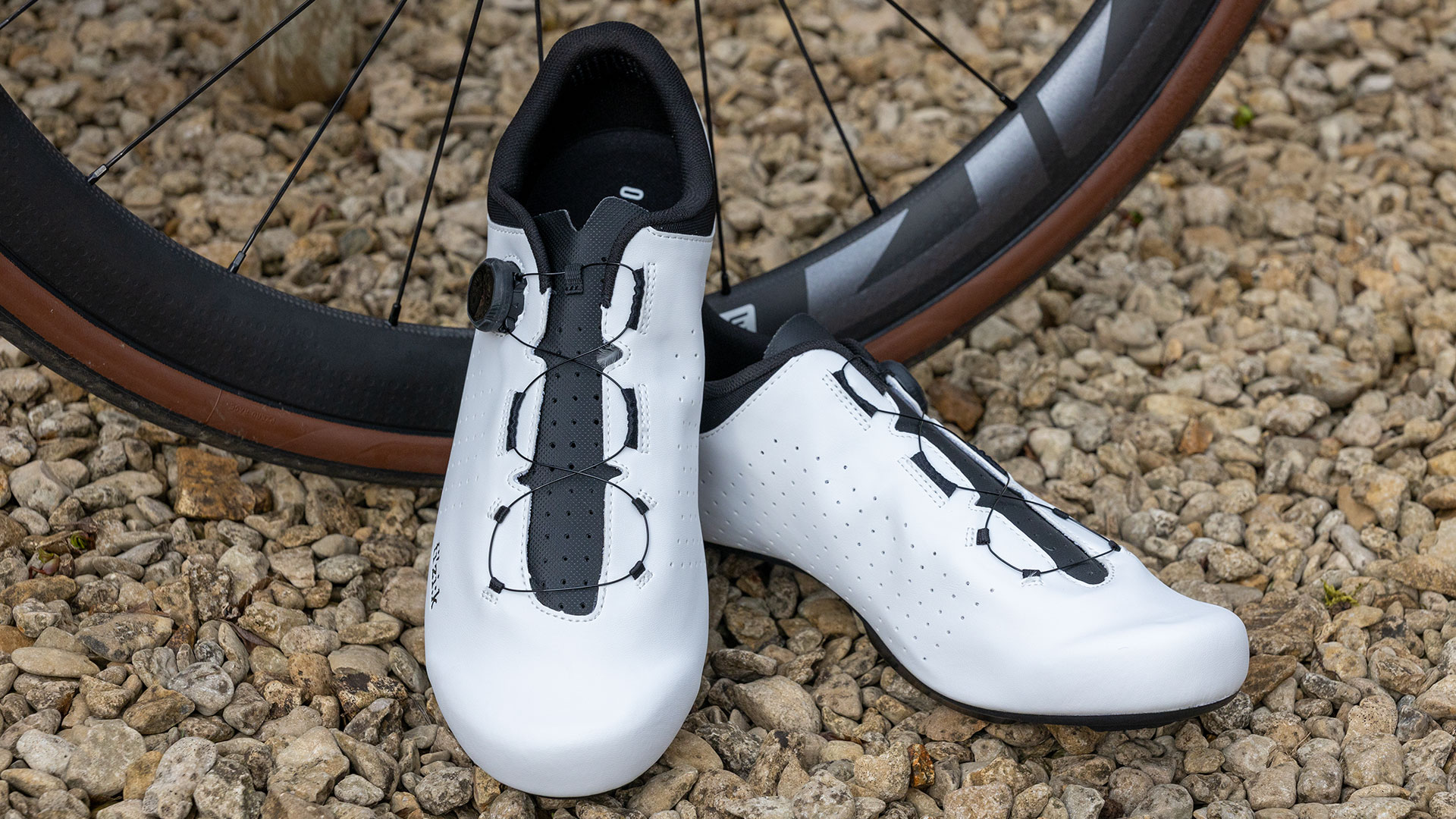 Fizik Vento Omna Wide shoe review: Yeti sneakers for those pedalling on a budget
Fizik Vento Omna Wide shoe review: Yeti sneakers for those pedalling on a budgetBroadly recommended for those of us with flipper feet
By Simon Fellows Published